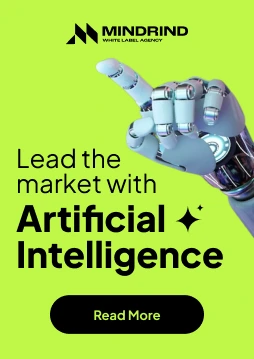Enterprises across industries are rapidly adopting large language models to enhance productivity, automate workflows, and drive innovation. But as these systems integrate deeper into business processes, they introduce new challenges around visibility, security, and compliance. Without structured LLM governance, organizations risk data leaks, misuse, and non-compliance with security standards. Implementing responsible AI governance with strong LLM access control, LLM data protection, and enterprise LLM monitoring helps maintain oversight of model activities, ensuring safety, transparency, and measurable performance through effective model usage tracking.
The Challenge: Uncontrolled Model Usage and Hidden Risks
The growing adoption of LLMs across departments introduces both opportunity and complexity. Teams experiment with model integrations, yet most organizations lack a clear framework for tracking and securing their use.
Common challenges include:
- Lack of visibility: No centralized view of who is using which model and for what purpose.
- Data exposure risks: Sensitive or regulated information accidentally shared during prompts or responses.
- No audit trails: Inability to trace outputs back to users or sessions.
- Weak access management: Inconsistent permission structures across systems.
- Compliance uncertainty: Difficulty aligning LLM use with data governance and security regulations.
Without enterprise LLM monitoring and governance, these issues can undermine trust and increase organizational risk.
The Solution: Responsible Oversight Through Measured Usage
A structured approach to LLM governance empowers enterprises to use language models confidently and securely. By integrating monitoring, tracking, and access control, businesses can ensure that every model interaction is auditable, compliant, and aligned with corporate data policies.
MindRind helps organizations establish secure frameworks that combine visibility and compliance. Through a mix of monitoring tools and controlled permissions, MindRind’s solutions enable companies to measure and manage model activity ensuring LLM data protection without restricting innovation.
This approach blends security with flexibility, allowing teams to benefit from generative capabilities while maintaining complete governance.
How Secure LLM Usage Works
A well-designed LLM governance system provides both transparency and control over enterprise model interactions. Here’s how it works:
Step 1. Enterprise LLM Monitoring
Track every interaction across departments, including user sessions, query logs, and output history. This ensures accountability and compliance visibility.
Step 2. LLM Access Control
Define role-based permissions to restrict who can access, modify, or share model outputs. Access rights are aligned with corporate data governance frameworks.
Step 3. Model Usage Tracking
Collect analytics on model frequency, performance, and prompt data to identify usage trends and ensure responsible utilization.
Step 4. LLM Data Protection
Encrypt all interactions and maintain secure data pipelines, ensuring that private or regulated information is never stored or exposed unintentionally.
Step 5. Responsible AI Governance
Establish a clear oversight framework that includes policies, review procedures, and ethical guidelines for how LLMs are used organization-wide.
This process ensures accountability at every level from individual queries to enterprise-wide deployment.
Key Features of a Measured LLM Usage Framework
- Centralized Monitoring: Unified dashboards for model activity and user analytics.
- Access Governance: Role-based permissions with flexible rules for compliance.
- Data Protection Measures: Built-in encryption and anonymization for sensitive inputs.
- Usage Insights: Detailed reports showing model utilization across departments.
- Audit Trails: Logged events for security reviews and internal audits.
- Scalable Control: Adaptable governance as the organization expands its model portfolio.
Benefits of Securing and Measuring LLM Usage
Implementing strong LLM oversight delivers measurable business impact:
- Reduced Risk Exposure: Protect confidential data and intellectual property.
- Regulatory Compliance: Aligns with data governance and ethical usage standards.
- Operational Transparency: Gain visibility into how and where LLMs are used.
- Informed Decision-Making: Use analytics from model usage tracking to optimize performance.
- Increased Accountability: Maintain clear ownership over outputs and model interactions.
- Sustainable Innovation: Foster responsible adoption of LLMs across departments.
Implementation Roadmap
Step 1. Assessment – Identify where LLMs are currently being used across the organization.
Step 2. Policy Definition – Establish internal standards for responsible model access and output validation.
Step 3. Integration – Connect monitoring tools with enterprise systems and data governance layers.
Step 4. Access Configuration – Apply LLM access control based on user roles and departments.
Step 5. Continuous Monitoring – Use dashboards and audit trails for enterprise LLM monitoring and improvement.
This roadmap ensures visibility, control, and compliance across every stage of implementation.
Why Responsible LLM Governance Matters
As organizations scale their use of language models, unmonitored adoption can lead to security vulnerabilities, inconsistent outputs, and compliance violations. Responsible AI governance ensures that automation and innovation happen within a structured, safe framework.
By combining oversight with agility, enterprises create a culture of accountability where LLMs are used efficiently, ethically, and transparently.
Conclusion
Innovation and security must evolve together. By measuring and securing LLM usage, organizations gain the power to innovate responsibly while protecting their most valuable asset data.
With LLM governance, LLM access control, and LLM data protection in place, enterprises can harness the full potential of language models without compromising safety or compliance.
MindRind helps businesses design secure, compliant, and scalable governance systems that bring structure and trust to every LLM interaction ensuring that the power of automation remains transparent, traceable, and responsibly managed.
Frequently Asked Question
1. What is LLM governance?
LLM governance refers to the set of policies, controls, and monitoring practices that ensure language models are used securely, ethically, and in compliance with enterprise standards.
2. Why is it important to measure LLM usage?
Measuring usage provides visibility into how models are being used, prevents misuse, and helps ensure accountability and compliance across teams.
3. How does LLM access control work?
Access control defines user permissions based on roles, ensuring that only authorized personnel can access, edit, or share model outputs.
4. What is enterprise LLM monitoring?
It’s a system that tracks all LLM activities including queries, users, and data interactions to maintain transparency and governance.
5. How does governance protect data security?
By enforcing LLM data protection measures such as encryption, logging, and restricted access, enterprises safeguard sensitive or regulated information.
6. What is responsible AI governance?
It ensures that all AI and LLM activities follow ethical principles, corporate policies, and compliance frameworks for fair and transparent operations.
7. Can LLM governance be integrated with existing enterprise systems?
Yes. It can integrate seamlessly with internal authentication, workflow, and compliance management systems.
8. How does MindRind assist with LLM governance?
MindRind helps organizations design and implement secure governance frameworks, ensuring complete visibility, access control, and compliance for enterprise-wide LLM usage.


